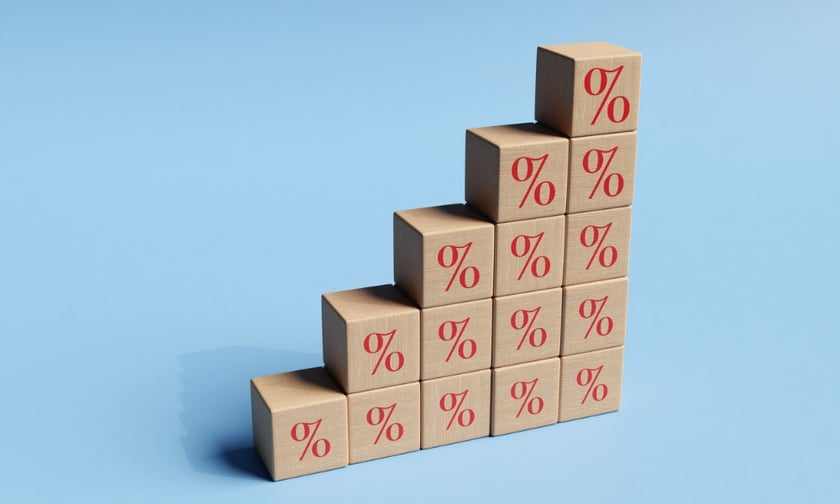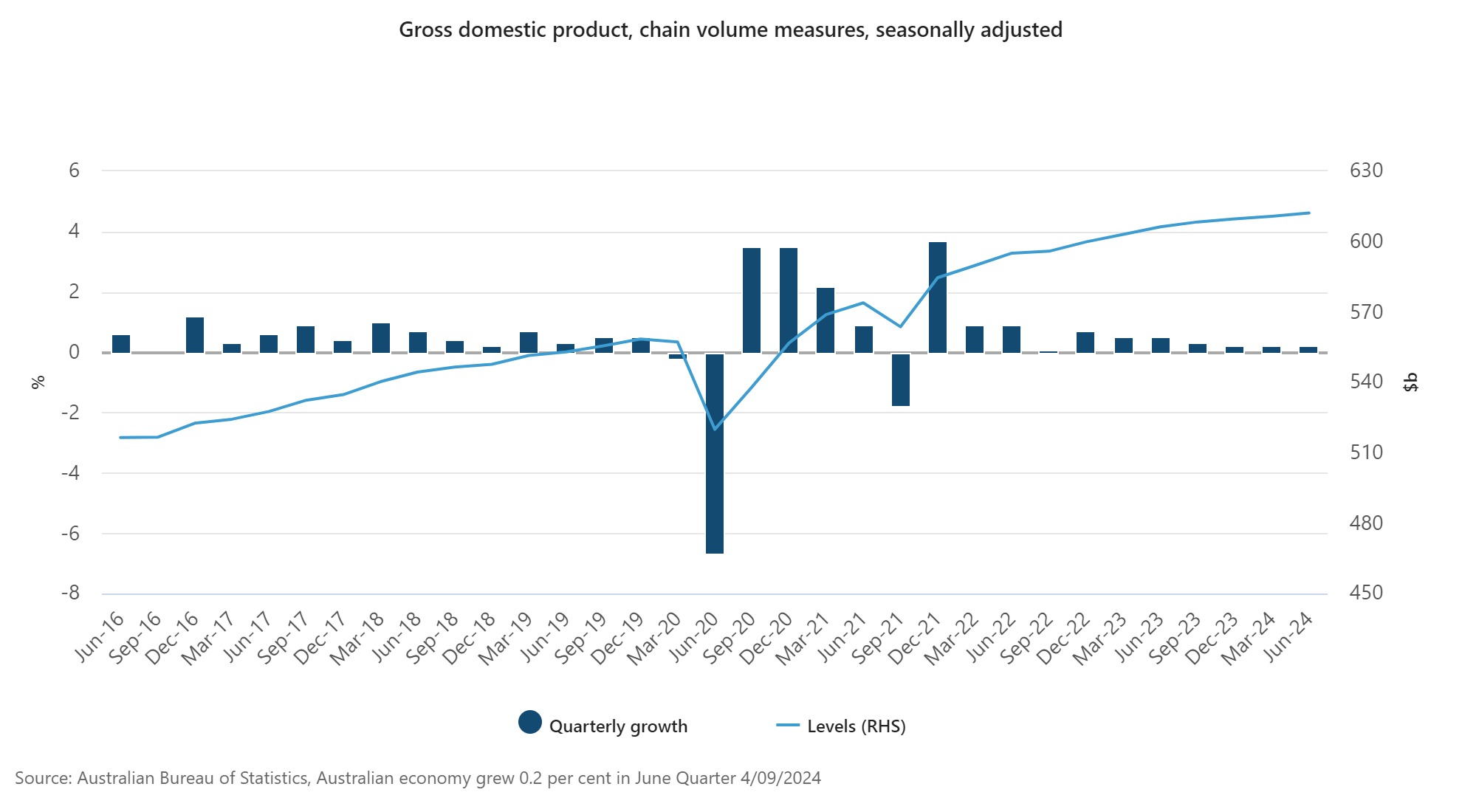

Australia has avoided falling into negative growth, as the latest GDP figures exceeded market expectations.
Australia's gross domestic product (GDP), measured in seasonally adjusted chain volume terms, increased by 0.2% in the June quarter of 2024 and by 1.5% for the entire 2023-24 financial year, according to the Australian Bureau of Statistics (ABS).
This was higher than NAB Economics forecast of just +0.1% for Q2 2024 and 0.8% year-o-year.
Still, apart from the COVID-19 pandemic period, annual financial year economic growth was the lowest since 1991-92 - the year that included the gradual recovery from the 1991 recession, according to Katherine Keenan, ABS head of national accounts.
“The Australian economy grew for the eleventh consecutive quarter, although growth slowed over the 2023-24 financial year,” Keenan said.
GDP per capita declined for the sixth quarter in a row, dropping by 0.4%.

Household spending decreased by 0.2%, reducing GDP growth by 0.1 percentage points. Keenan stated, “Spending on many discretionary categories fell in the June quarter.
This followed a relatively strong result in the March quarter, which included a number of sporting, gambling and music events.
“The strongest detractor from growth was transport services, particularly reduced air travel. This was the first fall for this series since the September 2021 quarter.”
Spending on furnishings and household equipment rose by 4.0% as households took advantage of end-of-year sales. This increase was partly offset by a 1.0% decline in food spending, as households reduced their grocery expenses.
Government spending grew by 1.4%.
Keenan commented, “National non-defence spending drove the growth this quarter and grew for the seventh consecutive quarter.”
“The rise in June was due to continued strength in social benefits programs for health services. State and local expenditure also contributed to growth with a rise in employee expenses.”
Total investment fell by 0.1% in the June quarter. In the private sector, investment in new machinery and equipment dropped by 1.6%, primarily due to decreased investment in agriculture and retail.
However, this was partly balanced by a 3.9% increase in ownership transfer costs, driven by strong activity in the property market.
Despite the declines over three quarters, total investment showed an annual growth rate of 4.1%.
Services exports rose by 5.6% in the June quarter, following declines in the two preceding quarters.
This growth was primarily driven by education-related travel services, which benefited from an increase in average spending after two quarters of decreases.
Changes in inventories reduced growth by 0.3 percentage points in the June quarter, following a build-up in March.
The wholesale and manufacturing sectors saw a reduction in inventories, reflecting declines in some imported capital and intermediate goods, such as machinery, industrial equipment, and processed industrial supplies.
Both real and nominal GDP increased by 0.2% in the June quarter, resulting in a flat GDP implicit price deflator (IPD).
The unchanged IPD was due to a 3.0% decline in the terms of trade, which was partly countered by a 0.9% rise in the domestic final demand IPD.
Export prices decreased by 3.0%, driven by lower bulk commodity prices, especially for coal and iron ore, while import prices remained stable.
This was the second quarter in a row of declining export prices, influenced by falling commodity prices, which was also reflected in lower mining profits.
The rise in domestic prices was driven by continued strength in services and construction sectors.
The household saving ratio remained steady at 0.6% in the June quarter.
Gross disposable income increased by 0.9%, surpassing a 0.7% rise in nominal household spending.
The growth in gross disposable income was driven by a 1.0% increase in employee compensation, partially offset by a 3.1% rise in income tax payable.
On an annual basis, the saving ratio stood at 0.9%, the lowest since 2006-07, as nominal household spending grew by 5.9%, outpacing the 4.1% growth in gross disposable income.
Over the year, employee compensation and interest received by households both contributed to income growth, rising by 7.3% and 39.3%, respectively.
However, this was partly offset by a 10.9% increase in income tax payable and a 36.1% rise in interest paid on dwellings.
